Afterlives: Millmoor
A photo essay exploring dissonance, the sublime and regeneration in Rotherham's abandoned stadium
I’m in the unenviable position of being at a loose end in Rotherham.
It’s a balmy April afternoon in South Yorkshire, and I’m three hours early for our lunchtime kick off against the Millers.
But I’ve heard whispers of a ghostly apparition of footballing heritage which hides in plain sight in this ancient industrial town.
I trudge from the train station over the Navigation Railway Bridge. I suppress a squeal of excitement as I see white, rusting floodlights piercing into the brilliant blue sky.
This is The Millmoor Ground. Spiritual home of Rotherham United since 1907, abandoned since 2008. And I’m here to break in.
I round the corner to find the stadium gates open. An enterprising local has taken over and is running a match day car park in front of the old ground.
I sidle over to the attendant. I’m an academic, I say. I’ve travelled from the Midlands to have a peek inside, I say. This is purely for research purposes, I say.
I’m told in no uncertain terms that I can’t go in. The ground is falling apart. It’s a health and safety risk. It’s out of the question.
I slip him £10. He shows me through the turnstiles and tells me to have fun.
I emerge onto the terrace behind the goal and squint into the late spring sun. The emerald field stretches before me like a rugged carpet. It’s breathtakingly beautiful.
Ruins have a deep association with aesthetic beauty in the British psyche.1 This is a legacy of the Victorian romantic artists, who fascinated over ruins as spaces which inspire awe in the face of the destructive power of nature and decay.
Millmoor is certainly not Tintern Abbey.
But as one meanders along the cracked terraces, weaves between the bunches of knotweed and inhales the musk of rusting metal and stagnant water, it’s hard not to be struck by a sense of the sublime.
I make my way along the front of the Main Stand and sit in the home dugout. I bask in the warmth for a minute before adventuring into the Tivoli End. I mess around with the goal nets, poke my head under the stand and run my eyes over the fraying concessions signs.
The more I explore, the more I’m struck with a profound sense of dissonance.
Like the Marie Celeste, Millmoor stands abandoned. It offers only tantalising traces of the people and culture it was built to serve.
Tim Edensor argues that the affective power of ruins lies in their "promise of the unexpected". Ruins are unregulated spaces which subvert our expectations, and are therefore rife with transgressive possibilities. 2
In some ways, what is so remarkable about Millmoor is just how familiar it is. As a lifelong football supporter, I have a profound, instinctive, almost unconscious familiarity with stadia.
But in the context of ruinous, eerie Millmoor, I am liberated from my usual matchday physical grammar. I am free to transgress and subvert my normal boundaries of behaviour.
I am free to lounge in the manager’s dugout. Free to hang off the crossbar. Free to scope out the surrounds from the police box, like a king surveying his kingdom.
I sit down in the centre circle and try to take everything in.
I scan all four stands and think about the generations of Rotherham locals who were cradled in the warm embrace of Millmoor.
For over a century supporters would converge on this sacred place for their ritual communion. They basked in the reflected glory of their heroes, huddled with friends, family and strangers against harsh winter nights. They would have laughed, cried, jumped for joy.
Millmoor is a palimpsest. Layers and layers of memory – one hundred years’ worth – have been inscribed on this place.
The thought of that long continuity being severed for the sake of some unpaid bills and a Japanese knotweed infestation imbues me with a deep sense of melancholia.
For now, Millmoor remains trapped in amber. It is a time capsule into which an entire community of supporters have poured their memories. It falls to the intrepid football adventurer to twist off the lid and venture inside.
But far from representing an ending, in some ways the abandonment of Millmoor represents a new beginning. The disintegration of a place’s physical integrity does not evacuate it of its meaning.
Ruination does not necessarily mean the end. In fact, as outlined by Caitlin DeSilvey, the process of material decay can be culturally productive.3
As I sit in a creaking old plastic seat behind the goal, I run a rudimentary google search. I’m delighted to discover that Millmoor has been reinvented since 2016 as a home for local youth football.4
It brings me great joy to know this ancient temple retains its vitality. It is now the children of Rotherham who may fulfil their grandfathers’ dream of smashing one home in front of the baying Tivoli End.
And so this iconic old relic of English football has come full circle.
All images used in this photo essay are property of the author. They were taken on a visit to Millmoor, Rotherham on April 23rd, 2023.
Pétursdóttir, T. and Olsen, B. (2014) 'An Archaeology of Ruins' in Olsen, B. and Pétursdóttir, T. (eds.) Ruin Memories: Materialities, Aesthetics and the Archaeology of the Recent Past. London: Routledge, p. 3.
Edensor, T. (2005) Industrial Ruins: Spaces, Aesthetics and Materiality. New York: Berg, p. 4
DeSilvey, C. (2017) Curated Decay: Heritage Beyond Saving. London: University of Minneapolis Press, p. 5.
Parker, I. (2024) ‘The Millmoor Ground’ Lower Block. Available at: https://lowerblock.com/articles/the-millmoor-ground-ian-parker/


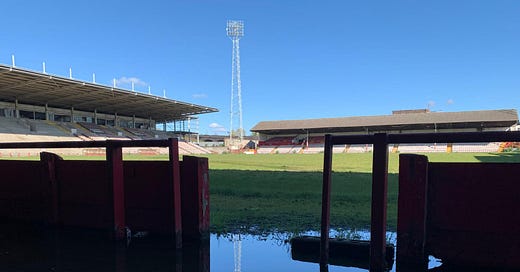



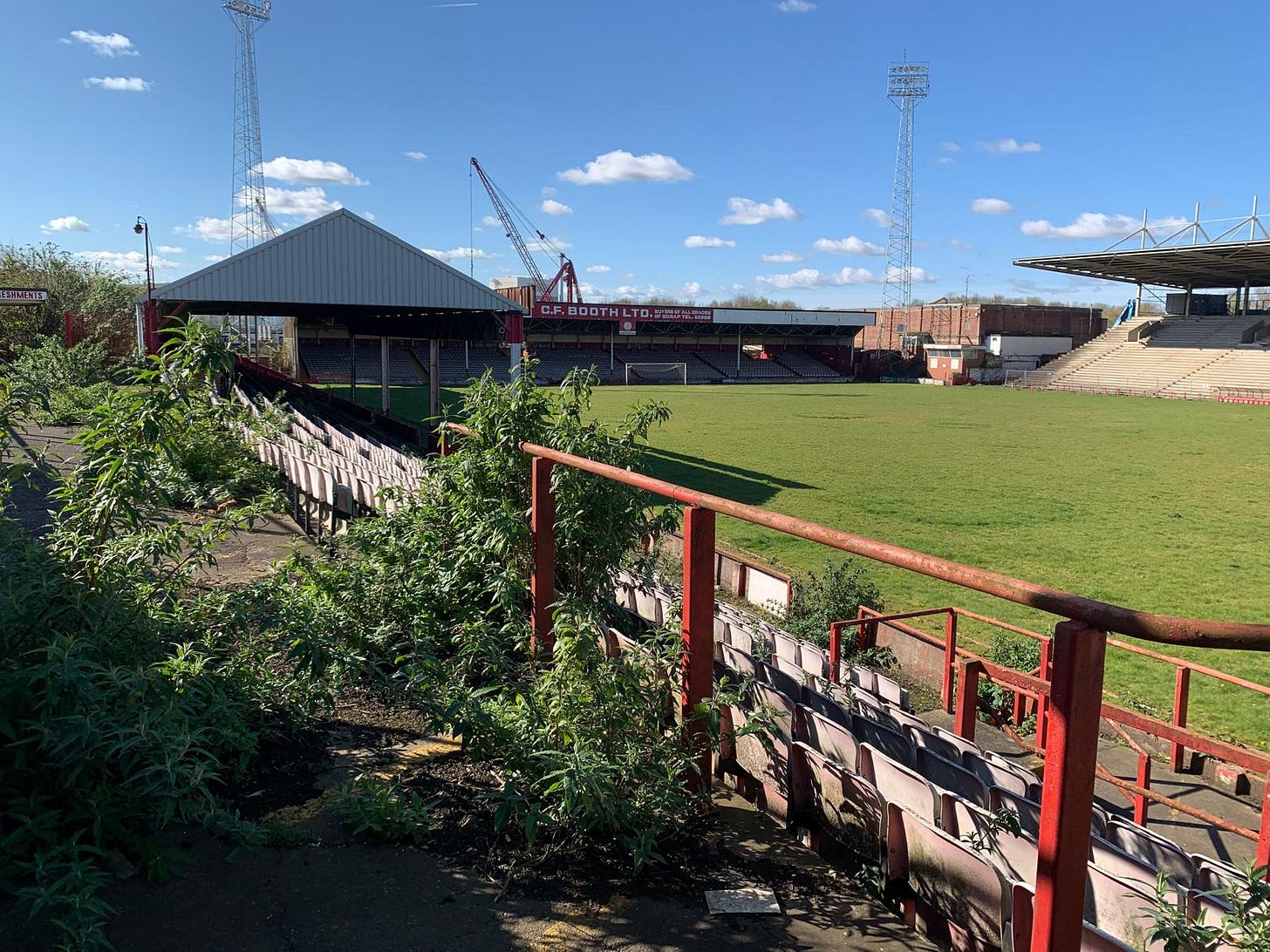
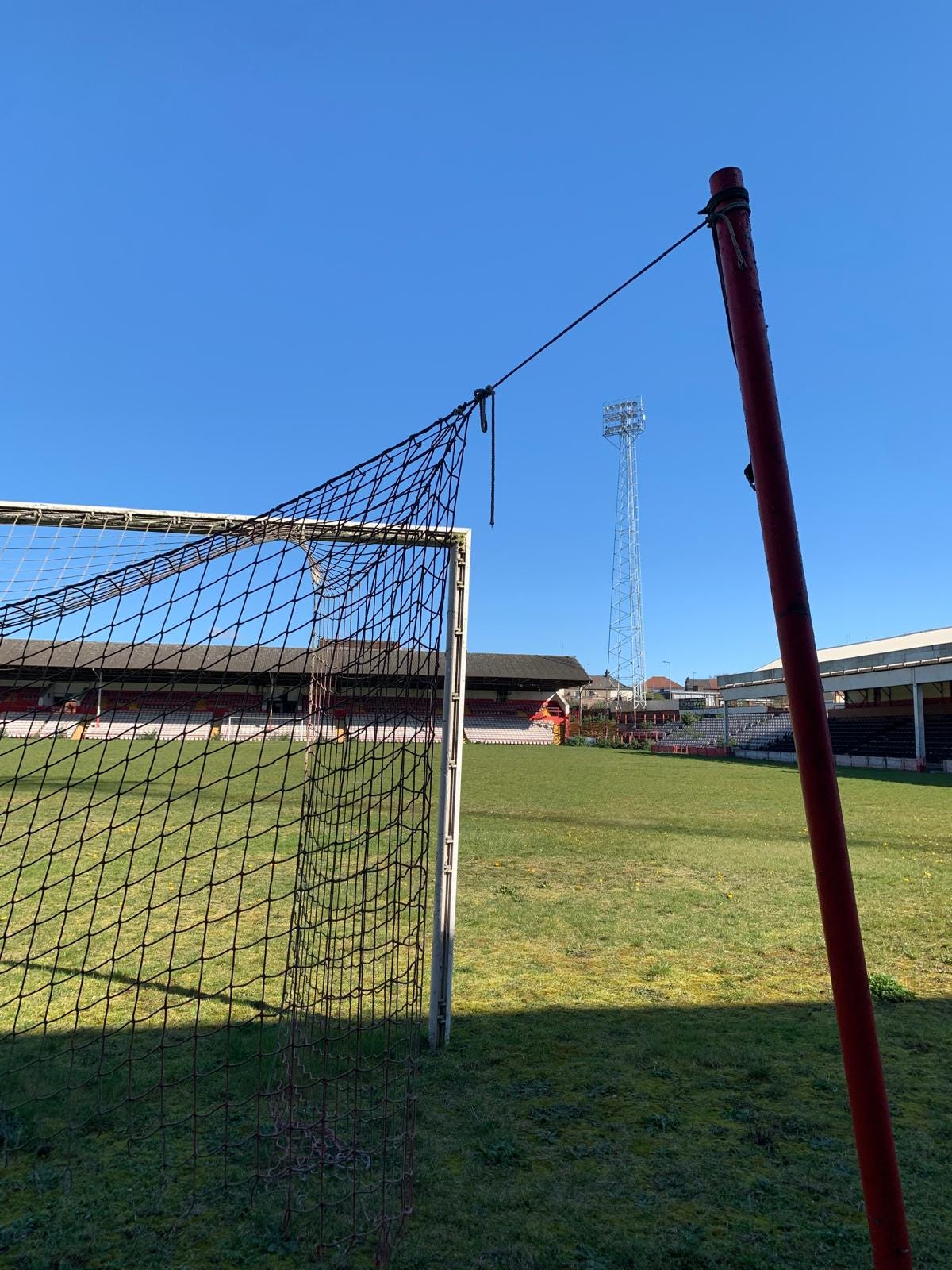

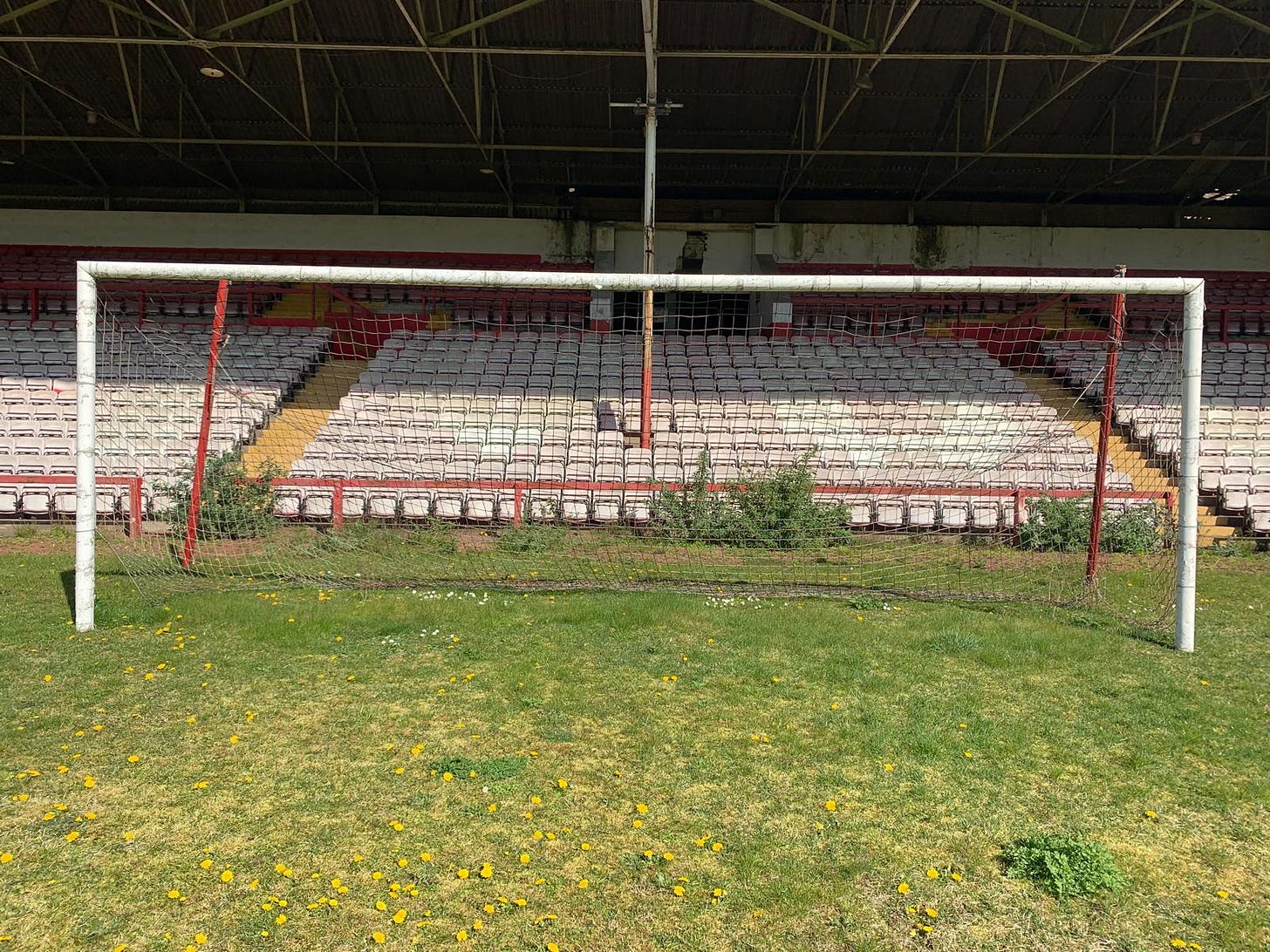
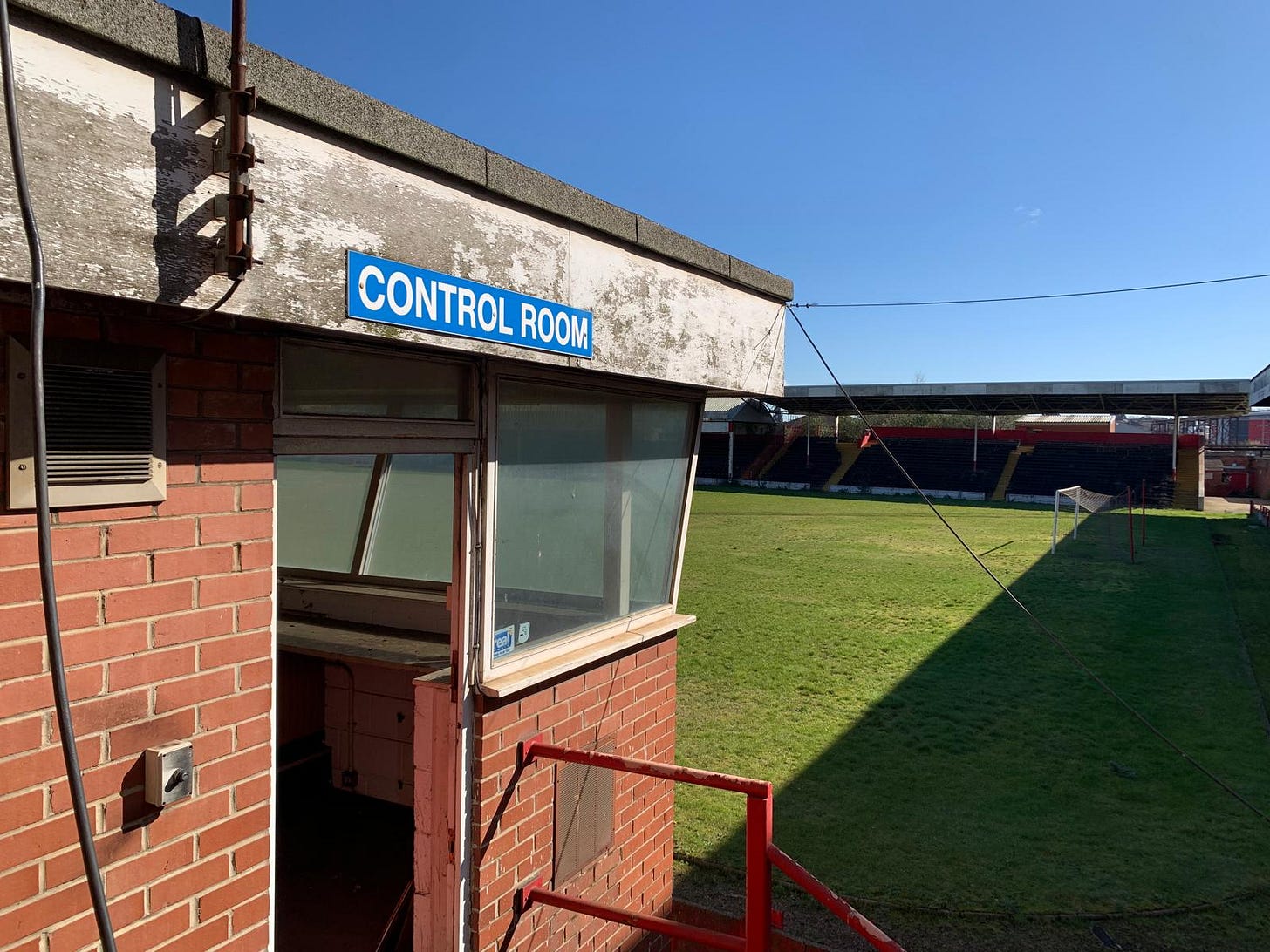
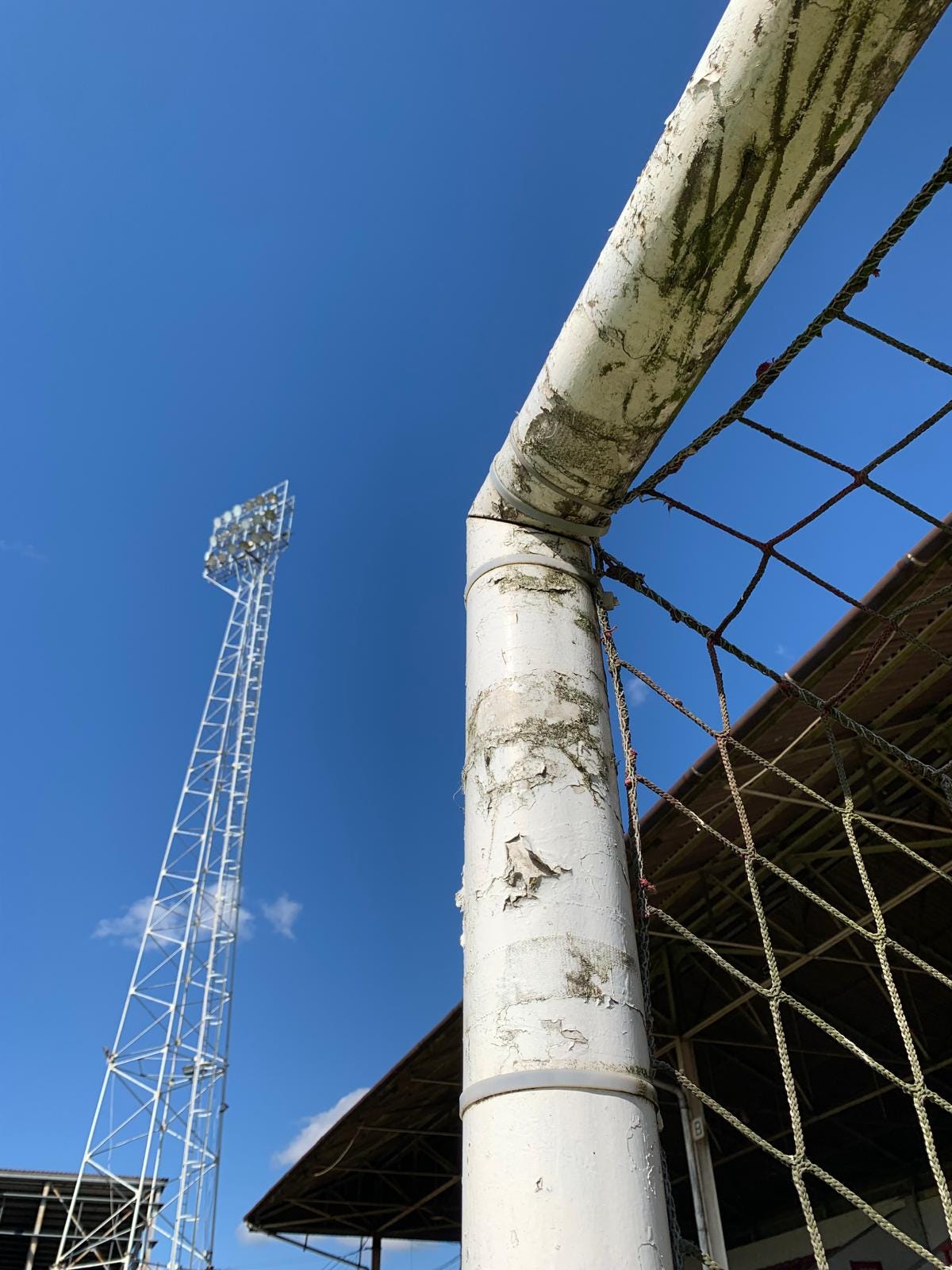
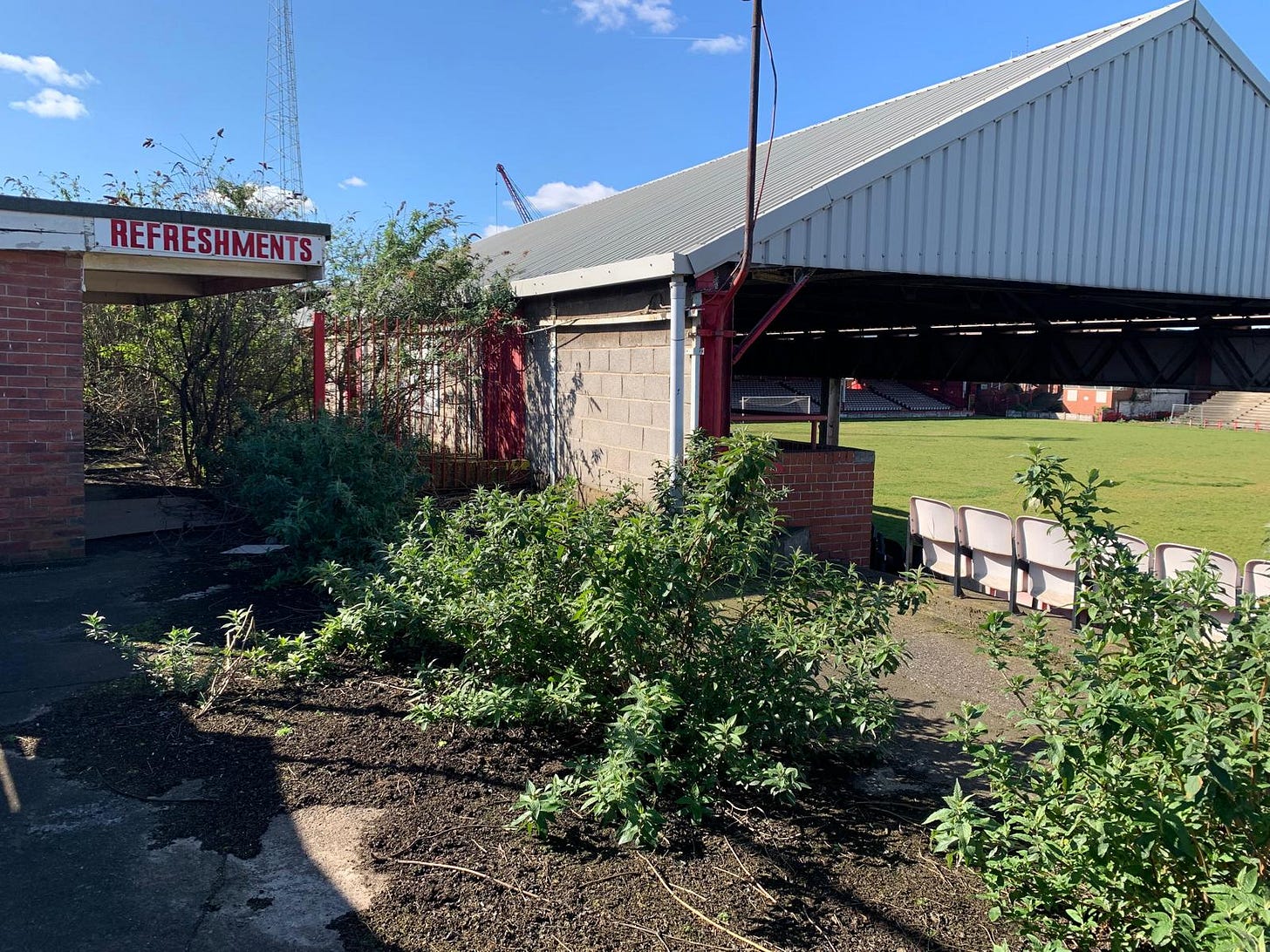
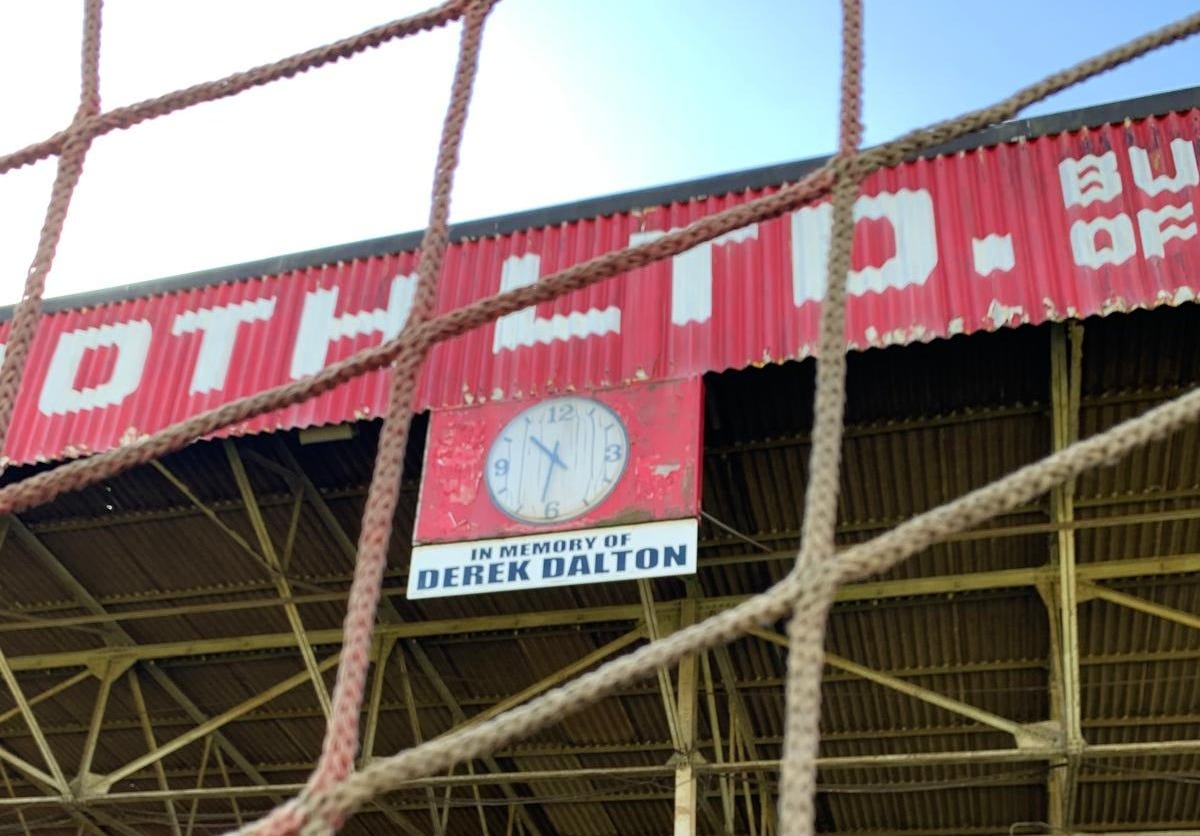
I love this post. Your storytelling is fantastic.
Similarly, my relationship to Craven Cottage brings up a lot of emotions. I was a fan first, going there for matchdays and singing, crying, laughing, screaming, and having my heart broken. Then I became a tour guide there, and I have the privilege to introduce others to my sacred ground. Recently, I've started working on the groundskeeping team on matchdays and the pitch that I wasn't allowed to touch as a guide is now my workspace. I hit it with a pitchfork to erase divots and allow the grass to grow. I strain to bring the artificial lights onto the pitch, bringing light and warmth on cold rainy evenings. One day I spent hours tilling the dirt and spreading seed. It's still sacred space, yet my relationship with it has changed.
wowowow this was such a delight to read!!!!